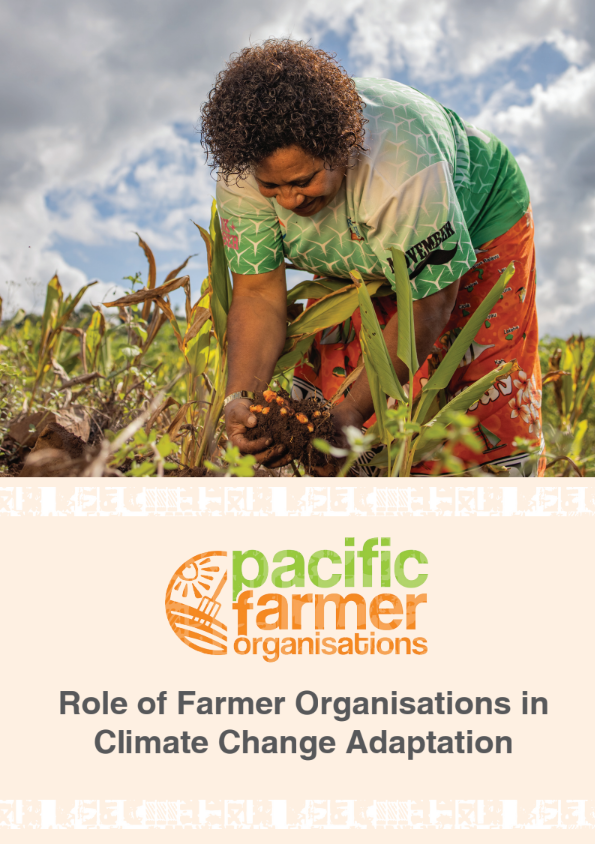Farmer Organisations and Climate Change Adaptation
Pacific Island people have a deep experience in coping with the effects of climate variability on agriculture, driven largely by the region’s exposure to the vagaries of the El Niño Southern Oscillation (ENSO). Traditional farming systems, which centre on agroecological approaches, have demonstrated some resilience against external shocks and helped to maintain food security. Local knowledge sustained over generations, through a range of traditional and cultural practices, has been the foundation of this resilience and has enabled effective adaptation. Community cooperation and collaboration have provided the social safety net.
Today, however, the more resilient food systems of the past are less common and as a result, food systems are more vulnerable to climate change. Further, this situation is exacerbated by pressures from an expanding population, growing urbanisation, labour migration, land degradation, such as soil nutrient depletion and soil loss, deforestation, loss of biodiversity, depletion of freshwater resources through saline incursions and contamination from urban, agricultural and industrial sources, and inadequate investment. Changing aspirations and value systems have contributed to an under-valuing of traditional food systems and agriculture resulting in a lack of interest from youth to engage in agriculture.
Climate change adds another dimension to these pressures and despite all the climate models and projections, the main message around climate change is one of extreme variability and unpredictability. Climate change is affecting, and will continue to affect food systems in the Pacific Island region, including the supply of food from agriculture and fisheries, the ability of countries to import food (because of increasing costs, shortages in supply and export bans ), distribution systems, and the ability of households to purchase and utilize food. The unprecedented rate at which the global climate is now changing is not within the realms of experience of Pacific farmers. As such, local knowledge may not be sufficient to bring about the level of adaptation required to effectively manage climate change. Bridging local and external knowledge is therefore critical because it widens the farmers’ knowledge base thereby supporting a more proactive approach to adaptation.
Climate projections are available for most of the Pacific Islands. Key messages from the ‘Next Generation Climate Projections for the Western Tropical Pacific’, launched in October 2021 include:
- Temperatures have increased, sea level has risen, and cyclones have become less frequent but more intense.
- Observed rainfall trends are not significant due to large natural variability driven by the ENSO.
- Further warming is projected, reaching around 0.7°C by 2030, relative to 1986-2005, regardless of the greenhouse gas (GHG) emission scenario. By 2050, the warming is around 0.8°C for a low emission scenario (RCP2.6) and around 1.5°C for a high emission scenario (RCP8.5). By 2070, it’s around 0.8°C (RCP2.6) to 2.2°C (RCP8.5).
- Future rainfall changes have large uncertainty. The central estimate of projected changes is close to zero percent in countries south of latitude 10°S, with increases between latitudes 10°S and 10°N.
- Sea level will continue to rise. By 2030, the increase is about 0.09 to 0.18 metres, relative to 1986-2005, regardless of the GHG emission scenario. By 2050, the increase is around 0.17-0.30 metres for a low emission scenario (RCP2.6) and around 0.20 to 0.36 metres for a high emission scenario (RCP8.5). By 2070, it’s around 0.24 to 0.43 metres for RCP2.6 and 0.33 to 0.63 metres for RCP8.5.
- Heavy rainfall intensity will increase.
- Fewer tropical cyclones are projected, but their average intensity could change by -5 to +10% for a 2°C global warming.
- The projected increase in average cyclone intensity, combined with sea level rise and increased heavy rainfall intensity, would increase cyclone impacts.

